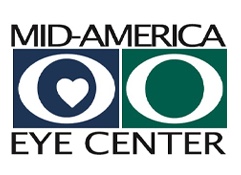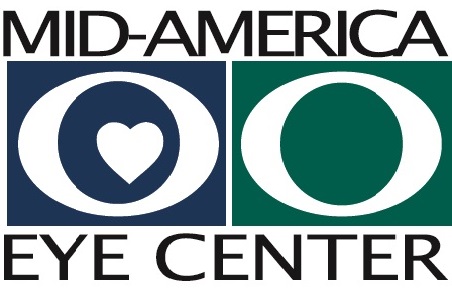Home | Services | Routine Vision Care
What to Expect
A cataract is a progressive clouding of the eye’s natural lens. Think of the eye as being just like a camera. If the lens in a camera loses its clarity, a cloudy, indistinct picture results. This is exactly what happens to the eye’s natural lens. While cataracts affect people of all ages, the occurrence increases with age. Over 50 percent of people past the age of 70 develop cataracts.
Routine Eye Exams
Routine eye exams are how an optometrist or ophthalmologist assesses the overall health of your eye, along with how he or she is able to catch visual and ocular problems before they exacerbate. At your routine eye exam, you can expect the following tests: patient history, visual acuity, preliminary tests, keratometry, refraction, focusing and movement, and eye health (American Optometric Association).
Patient history involves discussing any health problems and your medical history with your optometrist. Visual acuity testing measures how well you are able to see and read. Preliminary testing tracks how your eyes function to make sure that you are perceiving and responding normally to light, color, and your surroundings.
Next, the optometrist will run a keratometry test, which measures the shape of the cornea (American Optometric Association). A major part of a routine eye exam, the refraction, is where the optometrist determines how to correct any error in acuity with additional lenses. Using a phoropter, the optometrist will determine how to compensate for a patient’s myopia (nearsightedness), dystopia (farsightedness) or astigmatism.
Then focusing and movement tests will be run to ensure that both eyes work together. Finally, an eye health evaluation will be run, which includes pressure testing (important because an increase in pressure can indicate a greater risk for developing glaucoma) and an external examination. Dilation of the pupil helps the optometrist best review the posterior, lens and retina (American Optometric Association).
Your optometrist will then discuss your results with you and run any supplemental testing if he or she thinks that any problems have been discovered. Common problems include dry eye, allergy related conditions, corneal diseases and other abnormalities (New England and Facial Specialists).
Common Eye Problems
Astigmatism
Astigmatism occurs when the cornea is “out of round,” such that a viewed image is not focused on a single plane. Astigmatism is very common, and the majority of patients who wear glasses or contacts have some degree of astigmatism, which can occur with nearsightedness or farsightedness.
Astigmatism can be corrected with spectacles as well as with contact lenses. Smaller amounts of astigmatism can be corrected with spherical soft contact lenses, and larger degrees of astigmatism can be corrected with rigid gas permeable contact lenses or special “toric” soft contact lenses.
Astigmatism can also be easily corrected with LASIK, corneal incisions or toric lenses in patients undergoing cataract extraction surgery.
Irregular astigmatism is a relatively unusual type of astigmatism typically associated with corneal diseases or occurring after corneal surgery. The correction of irregular astigmatism usually requires contact lenses or corneal laser surgery.
Presbyopia
Presbyopia is the condition wherein the natural internal refocusing power of the eye weakens. This typically becomes noticeable when patients are in their forties. Those patients who have never needed glasses begin to notice they cannot focus on close images and need to increase distance between their eyes and the image viewed. Farsighted patients sometimes become symptomatic at an earlier age. Nearsighted patients begin to notice the same effect, and some will take their glasses of to read comfortably.
Presbyopia can be corrected with spectacles or contact lenses. Patients who have never worn glasses can use reading glasses for close vision. Nearsighted or farsighted patients achieve relief with bifocal glasses or progressive (no line) spectacles. Some patients who wear contact lenses can be fit with bifocal contacts, while other patients prefer a situation referred to as monovision.
With monovision, one eye is fully corrected for distance, and the fellow eye is left with a certain degree of nearsightedness. The nearsighted eye becomes the eye used for reading or other tasks requiring close vision. Some patients do not accept monovision, but it can result in very successful vision without the need for glasses.
LASIK can successfully treat presbyopia when used to create monovision. Prospective monovision LASIK patients can try monovision with either appropriate contact lenses or simulation with spectacle prior to surgery.
Farsightedness (hyperopia)
With farsightedness (hyperopia), images are in the focus behind the retina. One can think of the front surface, or cornea, as too flat, or the eye as too short. Farsightedness can be corrected with spectacles or contact lenses.
Farsightedness is also easily corrected with LASIK. During hyperopic LASIK, the cornea is steepened by removing more tissue in the periphery of the cornea than centrally.
Patients with very high degrees of hyperopia may also benefit by removing the natural lens inside the eye and replacing it with a higher than normal powered intraocular lens.
Nearsightedness (myopia)
With nearsightedness (myopia), images are in focus in front of the retina. One can think of the front surface, or cornea, as too steep, or the eye as too long. Myopia can be corrected with spectacles or contact lenses.
Myopia is also easily corrected with LASIK. During myopic LASIK, the cornea is flattened by removing more tissue in the center of the cornea than the periphery.
Patients with very high degrees of myopia may also benefit by removing the natural lens inside the eye and replacing it with a lower than normal powered intraocular lens.
When to get Examined
School aged children, contact lens wearers, diabetics, adults with high cholesterol or blood pressure, and adults over age 40 should have annual eye exams. Otherwise, an exam every two years is recommended. Diabetic eye disease, glaucoma and age-related macular degeneration are the leading causes of blindness in the United States (Advanced Eye Care). However, these conditions, in their early stages, often have no symptoms, so routine eye exams are the only way to detect them.
Children
While it is widely believed that 80 percent of children’s learning is visual, many Americans are unaware of how many children experience visual problems (Pennsylvania Optometric Association). All children should have annual eye exams, and an easy time to schedule those appointments is at the beginning of the school year.
Students labeled problem learners are commonly children who have undiagnosed visual problems, including children misdiagnosed as having attention deficit disorder or attention deficit hyperactivity disorder (Pennsylvania Optometric Association).
School vision screening s are not adequate replacements for annual eye exams. The American Optometric Association recommends that parents who notice that their child is frequently engaging in the following habits should schedule for their child an appointment with an optometrist: headaches, rubbing of eyes, avoiding up-close work, trouble reading, squinting in front of a screen or television, behavioral problems, performing below his or her potential, turns or tilts head, or struggles with homework (Pennsylvania Optometric Association).
Works Cited / Consulted
Comprehensive Eye and Vision Examination. American Optometric Association. Web. 07 Aug. 2013.
Make Eye Exams Part of the Back to School Routine. Pennsylvania Optometric Association, 04 Aug. 2009. Web. 07 Aug. 2013.
Routine Eye Care. New England Eye and Facial Specialists, 2012. Web. 07 Aug. 2013.
Routine Eye Examinations. Advanced Eye Care, 2009. Web. 07 Aug. 2013.




